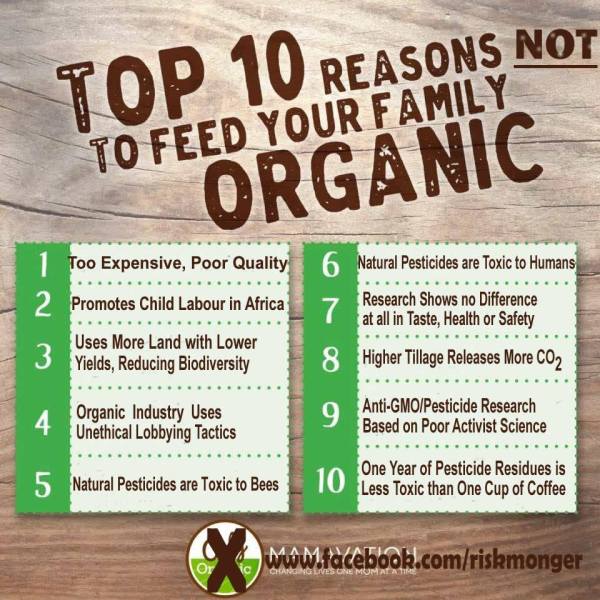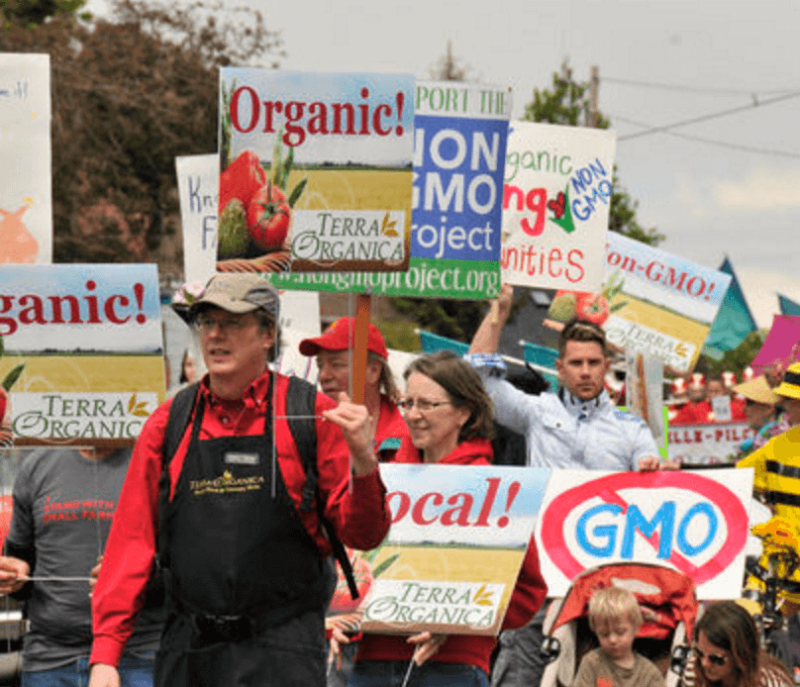If you had asked me six months ago if GMOs had a future, I would have replied, sadly, “No”. The forces of ignorance and activism pushing their Age of Stupid agenda were dominating the news, winning regulatory and supply chain concessions and influencing how conventional farmers were planning their crop rotations. But in the last two months, something has happened. GMOs are now seen as the reasonable, beneficial and socially and environmentally important strategic decision for sustainable agriculture.
How did this happen so quickly, over a matter of weeks?
Here today, GMO tomorrow
- A year ago, the anti-GMO pro-labelling campaign in the U.S., which guaranteed no negative consequences, was occupying the common-sense middle ground.
Today, we are beginning to notice that food manufacturers like Hershey’s, in moving from GMO sugar beets to non-GMO sugar cane to avoid public concerns about GMOs, were causing significant environmental and social destruction. - A year ago, the media were jumping on reports that regulators were not sharing all of the evidence on GM research, bees and pesticides.
Today, following a report from the U.S. National Academies of Science that gave GMOs a very positive scorecard (after consulting over 900 scientists), even the most campaign-driven UK news-source, the Guardian, had to conclude that in the EU: “We can no longer afford to turn our backs on the cultivation of genetically modified crops in our fields in coming years.” - A year ago, pro-organic Mommy bloggers like Mamavation or the Food Babe were ruling the PR playing field on social media, increasing referral revenues, getting prime-time coverage and winning corporate capitulations in a heartbeat.
Today, Vani Hari’s FoodBabeArmy has mutinied, with her social media interaction dropping like a stone and her Facebook likes stuck at a growth rate of less than 0.2 percent weekly increase over the last three months. - A year ago, I could not get anyone interested in the story of IARC’s conflict of interest and non-transparency scandal behind their glyphosate monograph pronouncing the herbicide probably carcinogenic. For a year, NGOs and activist scientists were abusing the hazard classification as a campaign tool with IARC even getting into the Brussels mud pit, unprofessionally attacking EU scientific organisations.
Today, IARC has been discredited by the WHO and FAO, countries like France are still opposed to glyphosate but admit it is not on grounds of it being a carcinogen and the anti-GMO activists are fighting a battle without scientific evidence. This week, on May 27, IARC’s expected pronouncement that coffee is carcinogenic will be met with chuckles. - A year ago, the idea of new GMOs coming onto the market seemed an impossibility given the negative populist narrative and the regulatory minefields.
Today, not only has GM salmon just been approved in Canada without public controversy but now New Plant Breeding Techniques are inspiring the public to see the potential of agricultural sciences in solving pressing global food security issues. Groups like Greenpeace and Big Organic are in disarray on how to respond to NBTs.
March against Monsanto Brussels in 2013 - A year ago, the March Against Monsanto attracted families and public figures to
marches in the thousands around the world.
Today, the march was cancelled in some cities out of lack of interest, attracted only dozens in others like my town of Brussels and seemed to rely on nutter issues like the opposition to vaccines and chemtrails to fill the ranks.

It seems like the anti-GMO position today is about as attractive as a free burrito at Chipotle!
What went right?
I would like to think that this turnaround is due to:
- a maturity of understanding having evolved that not everything posted on social media should be taken as truth;
- that a group of science communicators and farm bloggers, in the U.S. in particular, have taken back a certain degree of influence in the broader media;
- and that improper actions by anti-GMO activists have created a significant public reaction.
But then I see what is going on in the political arena in the U.S., Austria, Poland and the Philippines, and I question those rosy conclusions.
While I believe that the online science communicators and farm bloggers have indeed changed the dynamic, I think, importantly, the public suffered from a certain campaign fatigue. The organic food industry lobby has thrown everything at consumers to make them feel afraid, and for many vulnerable people, it has worked and organic food  consumption has increased. But at the same time, the hypocrisy was glaring. When consumers learnt that organic food also contains toxic pesticides, when they realised that organic farming is not necessarily better for the environment and when they concluded that much of the increased costs of organic food was for marketing purposes, they intuitively felt deceived and turned off.
consumption has increased. But at the same time, the hypocrisy was glaring. When consumers learnt that organic food also contains toxic pesticides, when they realised that organic farming is not necessarily better for the environment and when they concluded that much of the increased costs of organic food was for marketing purposes, they intuitively felt deceived and turned off.
In other words, reasonableness prevailed.
Reasonableness or rationality?
I have been working on a concept I call “reasonableness” which is different from rationality. A rational person follows a logical reasoning (if A, then B, if B then C, therefore, if A, then C), but that implies the capacity to make a decision within a certain degree of emotional vacuum. Today our information arrives within emotion-laden, personal diffusion tools which motivate (and manipulate) how rationality is welded (if A, then B, but I don’t want C!!!). Rather than rational arguments, I am afraid we have to communicate on the basis of “reasonableness”.
Reasonableness has a different “logic”: I know A, I understand B and a reasonable person would conclude C. This is a virtue-driven (aretaic), normative logic and thus has an in-built emotional element (being reasonable). We all think we are reasonable people and we look at trying to make decisions according to what would be perceived as “being reasonable”.
With GMOs, people are looking at the risks, benefits, the pro-GMO scientific consensus, realities from the organic food industry lobbyists, types of people running fear campaigns, potential solutions to global food security issues and concluding that it would be reasonable to support GMOs and unreasonable to impose organic food on others. Showing up at Saturday’s March against Monsanto was not considered, by a vast majority, as reasonable. The National Academies of Sciences, with its 900 scientists mostly supporting GMOs was seen as reasonable. Gary Ruskin and Vani Hari’s behaviour in continually attacking conventional farming was not perceived as reasonable.
I will develop this concept of reasonableness in more detail when I get a chance to get back to my “How to Deal with Stupid” series, but I would like to end with an anecdote of unreasonableness from my Hugs from Science event (see main photo) at last Saturday’s March against Monsanto event in Brussels.
March against Monsanto organiser: You can’t stay here! You are not against Monsanto!!!
Risk-Monger: But I am just talking to people about the scientific method!
MAM organiser: You can’t do that – this is a March Against Monsanto!
RM: I am only offering to give people hugs!
MAM organiser: You’re not welcome here!
RM: But people here are really feeling stressed out and vulnerable. Look, most of them are smoking!
MAM organiser: Me too, I’m smoking!
RM: Would you like a hug?
MAM organiser: Noooooooo!!!!!!
You can’t make this stuff up – one can only enjoy the opportunity to live it!
This article originally appeared on the author’s blog, The Risk-Monger, here and was reposted with permission of the author.
David Zaruk is a Belgian-based environmental-health risk policy analyst specializing in the role of science in policy and societal issues. He blogs under the pseudonym: The Risk-Monger. Follow him on Twitter at @zaruk































